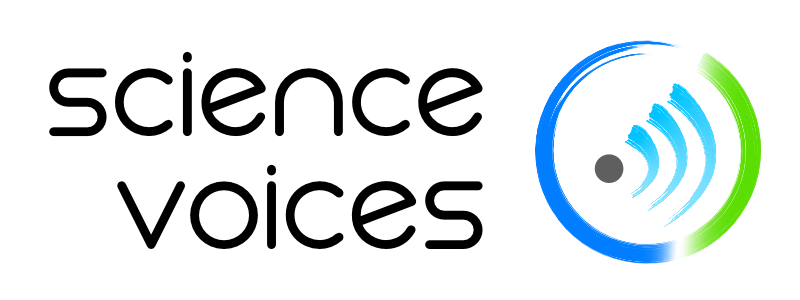Translator
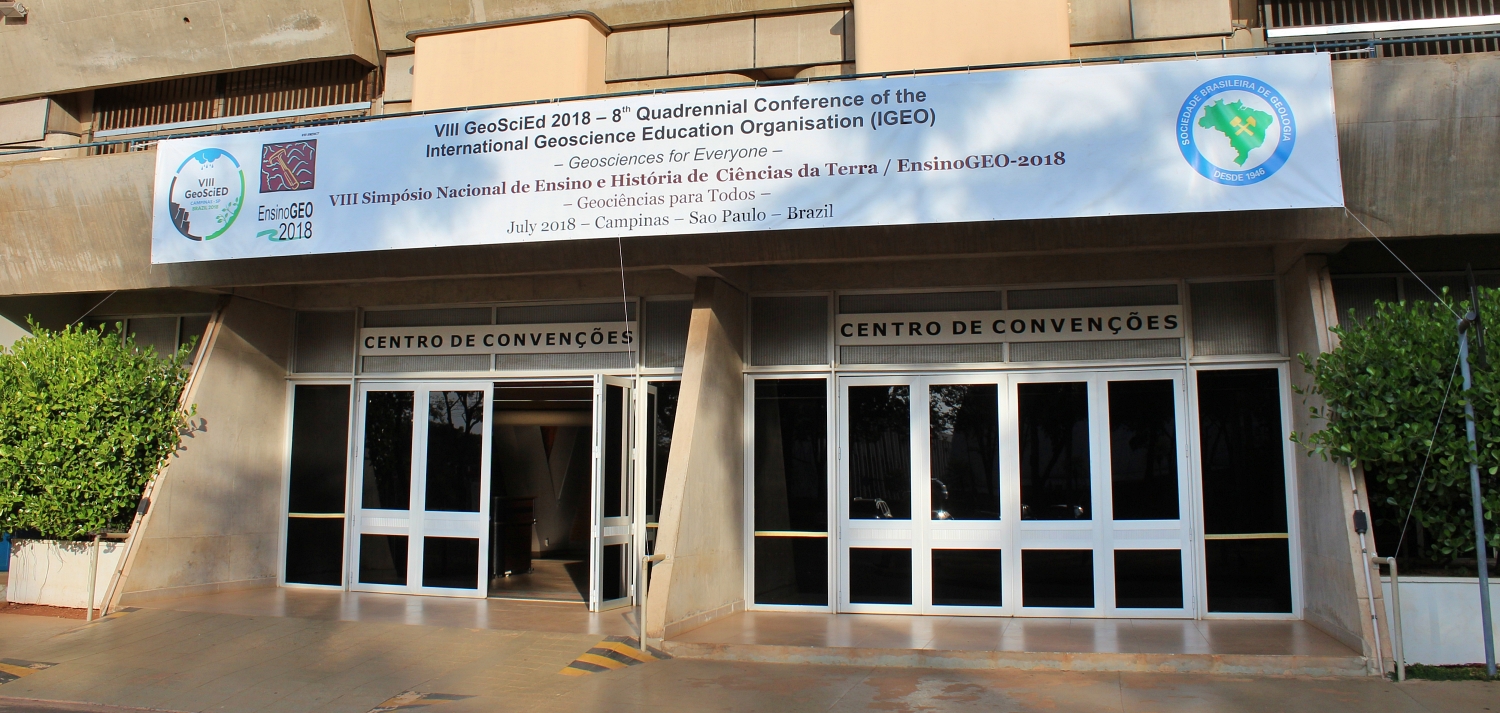
Inflection Points
As I sat conversing with Dr. Roberto Greco about our career pathways and our shared interest in geoscience education and its research after the end of the GeoSciEd conference in Campinas, Brazil, in 2018, I realized that I had come to an inflection point in my career. When I started working at Arizona State University in 2010, I had not been keen on online education, which up until that point (and arguably for long afterwards) had been a joke. But once I saw what could be done with intelligent tutoring systems, especially when in the hands of competent teachers, I started to change my perspective. Perhaps there was a way for online education to not only match what was done in the physical classroom but exceed it and do what couldn’t be done in any physical space. And since it was online, the approaches had the potential to reach a truly global audience.
But over time, I became disillusioned with the work I was doing in online education. A large factor in that disillusionment was in how we never really delivered on the global potential of our work nor, at times, did it seem like we were interested in doing so. I had visited Ukraine in 2009 for the first time, and while there I developed an interest in helping where I could, like my grandfather had. An obvious pathway for that, once I started working at ASU, was via online science courses. But there was no student market in Ukraine, so it was something that was never seriously considered. The disinterest extended beyond just serving learning materials to international students who couldn’t pay much. There was also a lack of interest in working with teachers who similarly lacked resources. We acknowledged that it was a problem, but our excuse for not addressing it was that because our teaching materials were online and internet speeds and computers were always improving, these materials would naturally diffuse to these environments anyway.
As part of my work at ASU (but sometimes on my own dime), I traveled to international education workshops and conferences, where I saw just how poorly modern teaching methods were actually diffusing over the internet. Most places were still stuck using 20th century learning management systems where you can post videos and quizzes and assignments and not much else. But it wasn’t just the instruments that were stuck in the previous century. It was attitudes as well. The intelligent tutoring systems I was promoting were dismissed as “monkey exercises”, in that it was assumed students were getting A’s simply by clicking persistently enough despite not learning anything. I realized quite quickly that simply putting our high-quality materials online was not enough. In fact, that attitude was likely undermining our mission by accidentally restricting its impact in much the same way that climate science lost out to denialism due to scientists assuming that the truth spoke for itself. My recurring experience whether overseas or in the US was that rather than making a profound change with our innovative approaches, we were making big splashes that fizzled before they reached any shores. And there was little interest in addressing this, or even letting me try to do so.
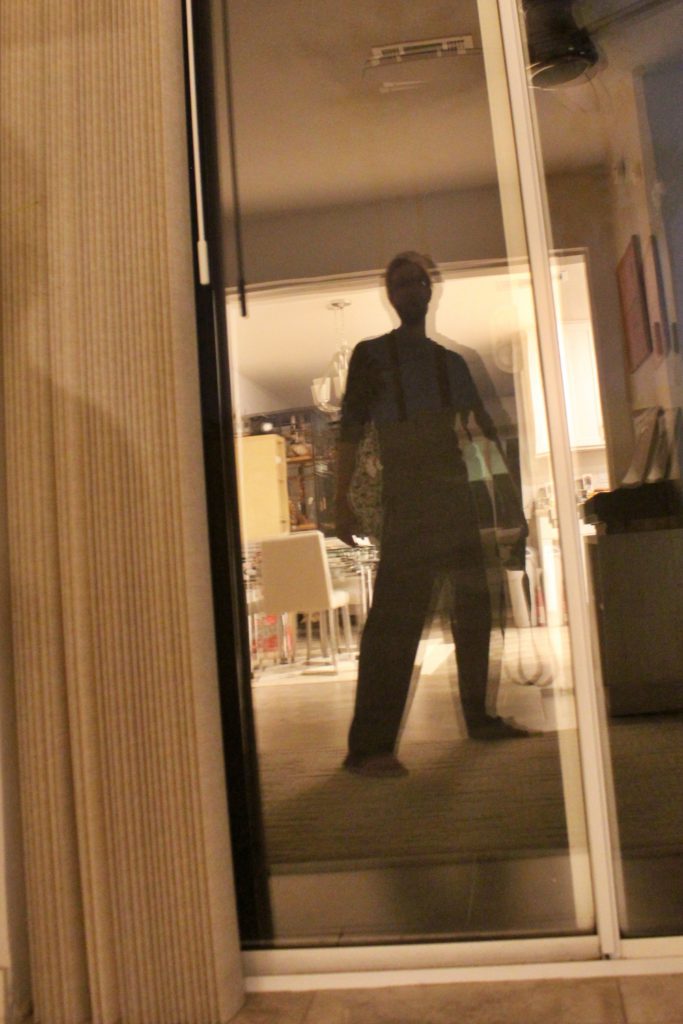
This created a profound misalignment between the mission and vision that had originally inspired me and the actual day-to-day work I was doing. So I started looking for alterative pathways for my career. But what could those pathways look like? For almost a decade, I had specialized in building one type of course in one type of digital system at one university. I had accidentally boxed in my mind and could see that no matter the challenge, I kept coming up with the same solution … another iteration of the same class I had been building for years. In this exciting innovative space, I found that I had become stagnant and couldn’t actually generate any more innovation.
In mid-2017, after finding that I was being repeatedly deflected from shifting my career in a direction that would bring my work in better alignment with my motivating interests, I started to explore on my own. I desperately needed to unbox my mind. Over the span of a year, I started helping out with the SolarSPELL project, I attended a workshop for Alaskan teachers working with indigenous knowledge and science, a workshop on cities and climate change in Jakarta, Indonesia, a winter school on astrobiology and research in Tokyo, Japan, and a conference on global geoscience education in Campinas, Brazil. Each showed me how deeply entrenched traditional learning practices and attitudes towards digital education were globally, how little awareness there was of what else was out there or even what was possible, and how desperate the desire for change was. It was in the conversation with Roberto in Campinas at the end of that one-year scouting period that everything came together. There was a way of addressing the problem. But first, I would have to step away from an environment that was not interested in addressing the problem because it was a challenging one to tackle.
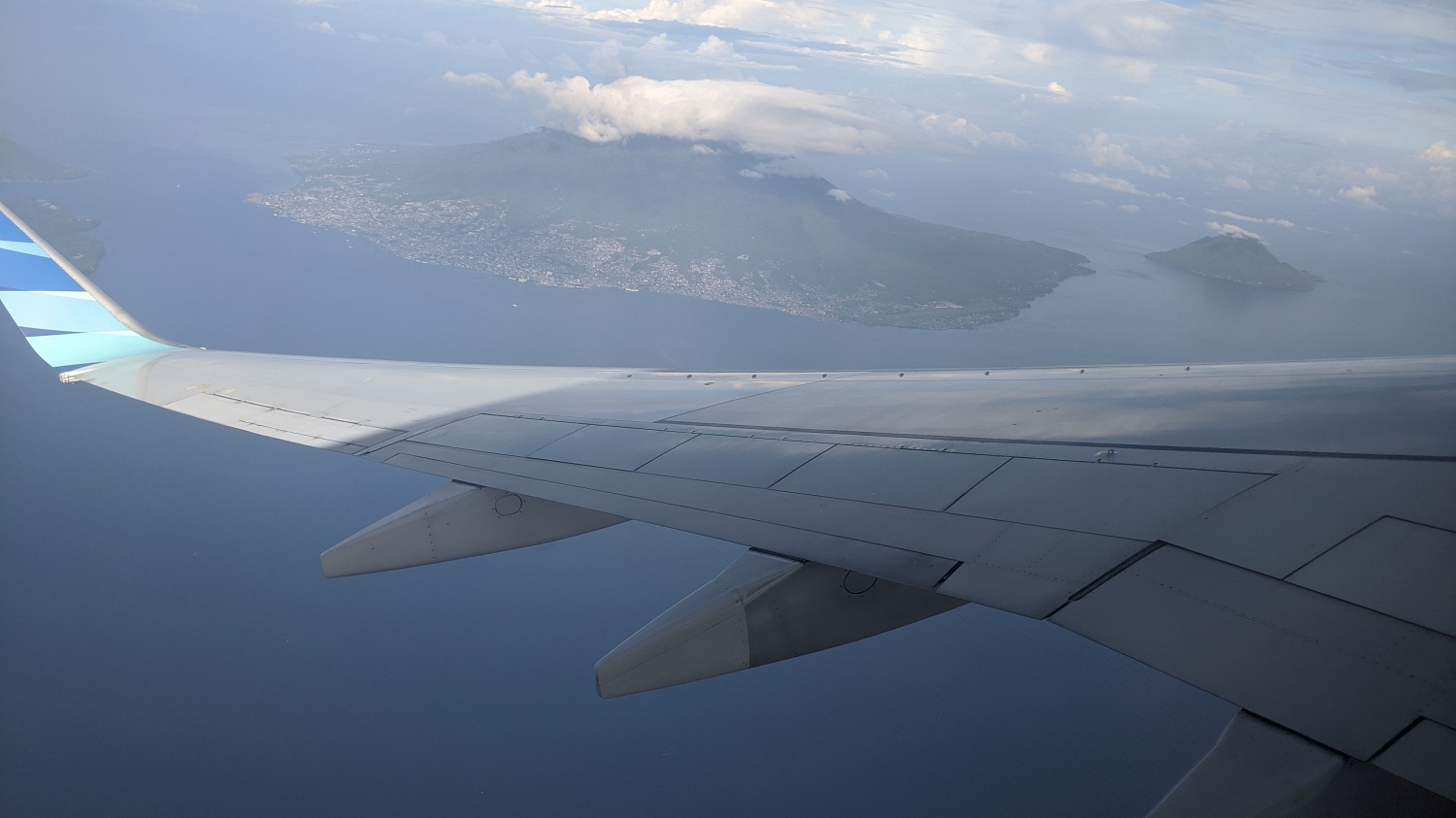
Last view of Ternate, Indonesia, March 25, 2020 (original departure was scheduled for August). The premature end of a Fulbright fellowship due to the pandemic resulted in a truly unexpected journey.
Over the next three years, I undertook an ambitious project to try to truly understand the scope of the education innovation problem by actually living with it, not just reading about it or talking to people about it. That journey did not unfold as expected, both in predictable and truly unpredictable ways. I found upon arrival in Ternate, Indonesia, for a six-month Fulbright fellowship that the teaching environment was way more difficult than I anticipated. I learned that I would be teaching my first class 20 minutes after it started because the teacher hadn’t shown up. Translation was challenging with my rudimentary knowledge of Indonesian. I found I couldn’t pull out relevant examples for my students because I hadn’t lived in Ternate long enough to know what a relevant example would be. None of my digital tools worked because the internet was too slow or students only had smartphones and all the tools available were built on that faulty assumption of “they’ll eventually get it because it’s online” with little thought about what others’ “online” experience actually was. And then it all fell apart when the pandemic burst onto the scene and I had to retreat back to the US. I lost access to almost all of my students. No one could follow what I was doing any more and upon returning to the US, I reboxed myself by reverting to the quick-and-easy tools I was used to using, almost immediately forgetting to check whether what I had just built actually worked in the Ternate internet environment because I no longer had to live with it. The unboxing of my mind would take a lot more work.
My global journey took me to the US Virgin Islands next, which seemed like Ternate on a lower difficulty setting. Immediately upon arrival, I found myself mostly restricted to my apartment (with a fantastic view, so I can’t complain too much) and teaching intro physics and its lab using Zoom and garbage. But the most serious challenge was actually the loss of the intelligent tutoring system I used to work with due to the business folding up a month before the pandemic started. This eliminated almost a decade of my teaching materials and highlighted how bad the assumption that “they’ll eventually get it because it’s online” actually was. Poor business decisions took down all the materials we were waiting to naturally diffuse out into the world at a moment when that process accelerated due to the pandemic. Instead, the pandemic amplified the very worse styles of digital learning (the video lecture and quiz, show-and-tell simulators). But even if the platform had survived into the pandemic, it wasn’t the good solutions that were diffusing out naturally. It was the easy and bad ones. As I sought to work with the limits of Zoom and no intelligent tutoring systems, however, I found that I started thinking more creatively. Through observation journals, at-home labs, and computer modeling I was able to surface important cultural elements in the environment where I was living that drove a lot of student thinking, despite not being able to engage much with island life due to lockdowns. I was starting to build the cultural competence that would be necessary for bringing ideas across cultural boundaries, to solve the problem of how exactly you get knowledge moving if diffusion isn’t working.
The next step of this journey was supposed to be Ukraine. But that was stymied by inflexible and opaque bureaucracy both at the embassy and my host university. From what my prospective host there told me, my professional invitation to teach at the university was stymied by my being an independent scholar rather than affiliated with a prestigious institution (or any university at the time). There was no mechanism for inviting an independent scholar, even though the faculty and rectors wanted me there and I could pay my own way. It’s a problem I would encounter again and began revealing an additional barrier to knowledge diffusion … institutional demands for prestigious, rather than effective, collaborations and tools, especially for overseas universities working to build up their reputations.
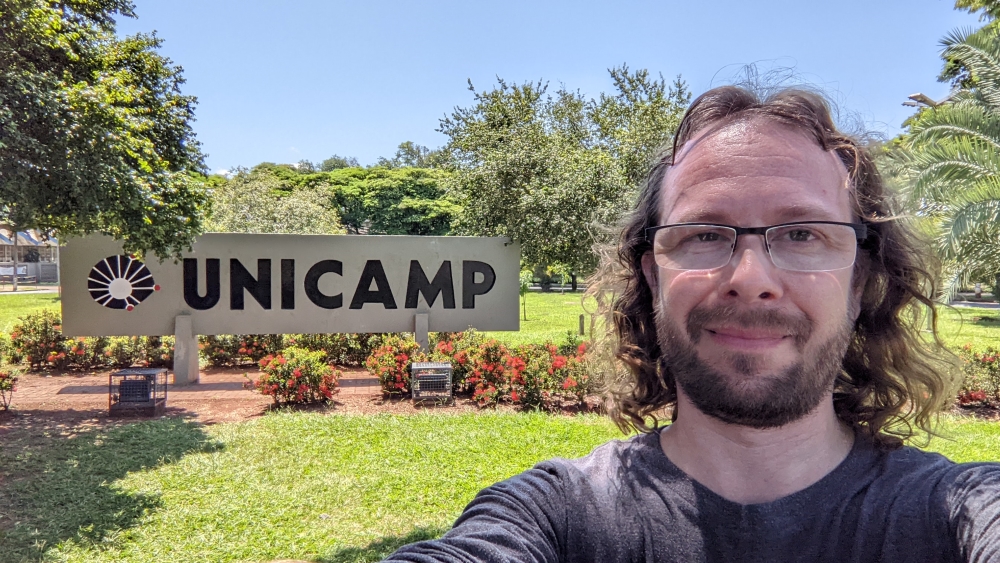
Full circle, arrival back in Brazil to complete the three-year journey in 2022
(Universidade Estadual de Campinas – UNICAMP)
The final stop of my journey was Brazil, as originally planned when I started this crazy experiment. This was a do-over on my Indonesia Fulbright experience, which had been truncated by the pandemic. I would have the same challenges: where to buy food, how to navigate the transportation system, how to communicate, how to navigate immigration and assorted bureaucracy. But I would also be coming full-circle, working on the challenges in geoscience education that I enjoy with a colleague who was interested in the same challenges in the place where we had met years prior. By living in Brazil for a year and planning for longer, I was able to both expand my experiences in international education and distill my thoughts on them.
I engaged with Brazilian science education in a variety of contexts. There was the observation of extension activities for agroforestry communities shortly after I arrived, an outgrowth of a mindset at UNICAMP of ensuring that education and the university served the people of the surrounding community and not just the academics at the institution. There was also an extension class I taught towards the end of the fall semester and into the winter holidays on astrobiology that highlighted the challenges of developing dual-language courses and keeping students interested in an unpaid class, especially on days when it rained and it was too much of a bother to walk to class as a result. I gained more formal teaching experience later in the spring when Roberto and I worked on incorporating Greenworks and Sustainable States materials into a number of his classes, utilizing both a project design curriculum and a role-playing game to provide students with richer and more interactive experiences.
My strongest engagement with the Brazilian university ecosystem came via a job application for a permanent position at UNICAMP. The application required extensive documentation, including additional physical proof for every line on my CV via a certificate or publication. That proved especially difficult for the innovative work I had done at ASU which, despite assurances that it would change the world because it was online, had actually ceased to exist between the submission of my application and its review a month later. Having passed the first round, the interview portion itself was a week-long test that included written, oral, and other components that would be scored to determine who would get the job, with the entire process published so that the public could review, as UNICAMP is a public institution. I appreciated the meritocratic approach to choosing faculty for the university, but I could also see problems with it, as the formulaic nature of the process eliminated candidates who did not fit the formula. I had had a difficult time fitting my unconventional career into the required template, and now during the written test, I found that I needed to have physically printed hundreds of pages of references to use during the test, rather than being able to utilize the heavily noted PDFs I had on my iPad. Also, the exam was in Portuguese despite me having noted during the application process that I needed the English version. The food poisoning the night before also didn’t help. It was my second worst interview ever.
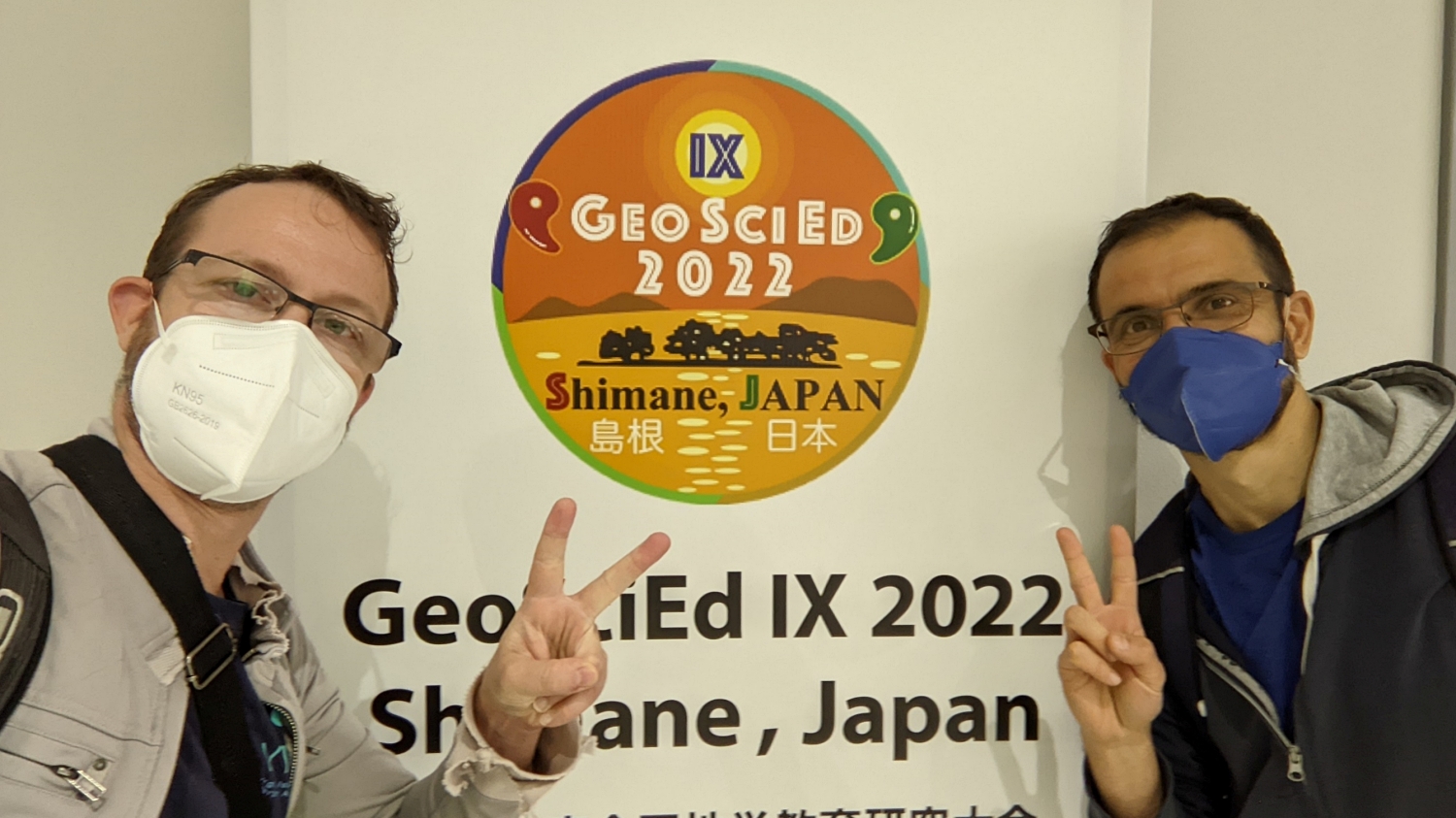
Translation is a multi-layered approach, requiring language and cultural competence, but most importantly, partners who understand and want to work on the problem together.
Still, as I reflected on the question that I needed to answer on the job exam, which was on how innovation manifests in Brazil and how we can accelerate it (I think … I’m not sure if I was able to translate it correctly), I found my experiences over the past decade coming together. During that process, a conversation I had had with Dr. Steve Desch back in Arizona bubbled to the surface. We had been talking about the strange roles we play in our communities and he mentioned that he saw himself as a “translator”. He interfaced with planetary sciences and astrophysics and sustainability communities, who are often insular and don’t talk to each other and therefore miss connections that can lead to breakthroughs. He knew the “language” and cultural norms of these various communities and could easily move between them, helping make connections that they themselves couldn’t make or even see were possible. As he was describing his role, I found that the term suited me well, although the connections I was building were far more ambitious, interfacing between geosciences, education, computation, and policy as well as across multiple world cultures. Now, through years of working in challenging educational environments, I was finally gaining the cultural competencies necessary to actually help that translation process for online learning materials to actually work, rather than sitting passively and waiting for it to happen.
The key, I wrote in my job essay, is to understand why technologies and systems develop the way they do. From having lived in the Global North all my life, there is an implicit assumption that the way we do things is great and will naturally diffuse out as a result. It’s the fallacy we accepted at my old job which undercut our work, even within our own communities (we avoided thinking about the Indigenous reservations in our home state, for example, which tend to have very poor connectivity and would have been hard to work with both technically and culturally). We don’t really appreciate that our systems and technologies are designed to solve our own problems and that means that they may not necessarily translate to another society and its problems without some work. But now that I’ve lived for a number of years in the Global South, I’ve noticed a flip side to the attitude of “it’ll eventually get there”. In the places where I tend to live now, there is often a lack of understanding of why these systems and technologies work in the Global North. This results in practices and technologies getting imported that don’t end up having the hoped-for impact because they were designed for a different environment. Take scientific publications, for example. Publications are often required for promotion or graduation if you are conducting scientific research, preferably in a high impact journal. When the approach is imported elsewhere, it has resulted in a proliferation of low-quality journals so that subpar work can be published simply to meet this metric. To combat these junk publications, the requirement is often shifted to publishing in a Global North journal rather than undertaking the work necessary to develop high-quality local journals. You also see this in the adoption of international MOOCs in lieu of developing quality local teaching. Or the chase for prestigious partnerships that can be listed in a report, rather than developing effective and productive partnerships.
Without a translator … one that understands more than just the language but also the cultures from which the systems or technologies are originating and subsequently entering … many of these efforts are doomed to fail. Knowledge and innovation don’t just diffuse out naturally. We’ve seen thousands of times how quickly misinformation rockets around the world. The same holds true for low-quality solutions, as we saw during the pandemic. Good ideas get crowded out easily. They require a sustained effort to reach a global audience. Putting it online is no longer a good enough solution (nor was it ever). I headed out into the world to gain the experience necessary to figure out how to become a more effective translator of knowledge and technologies. I’m still learning. But if we want the best innovations and bodies of knowledge to move more effectively across our collective mindspace, a lot more of us need to learn these skills too.
